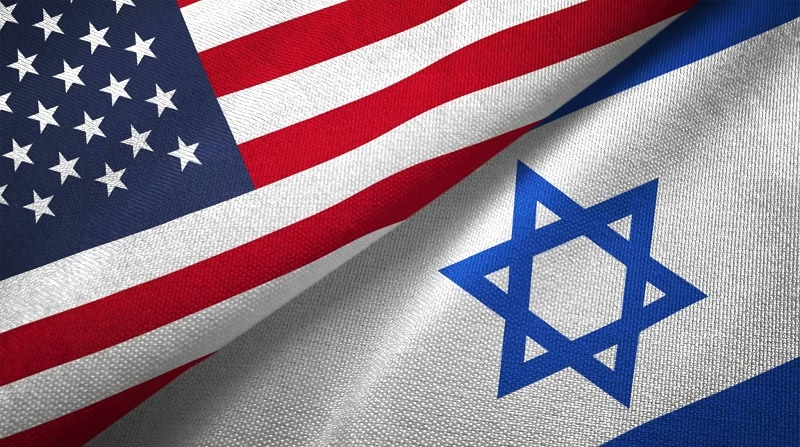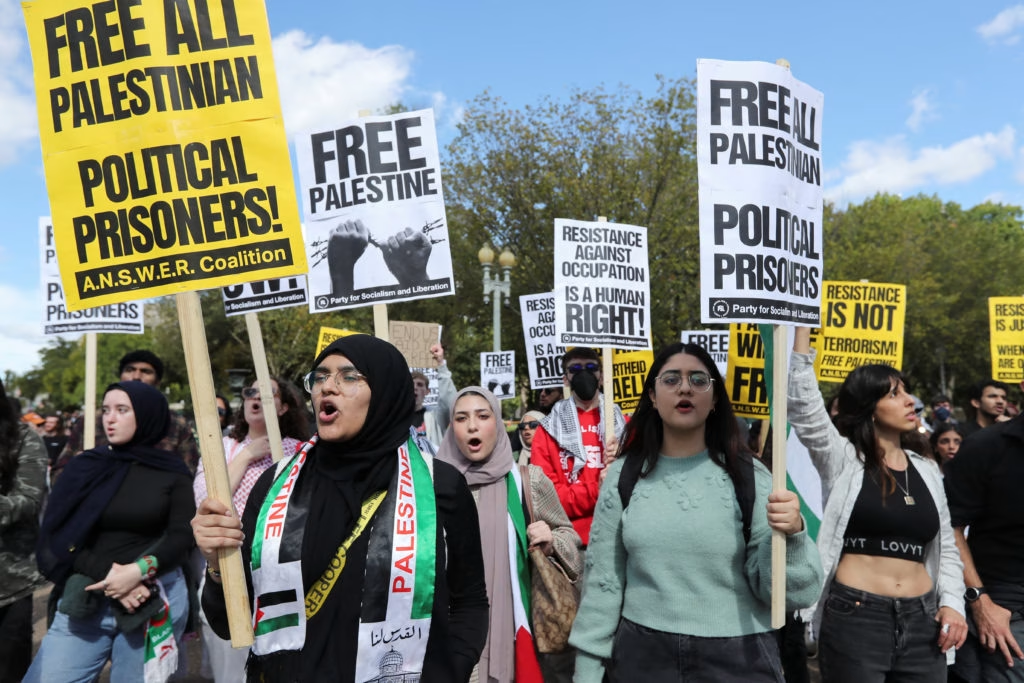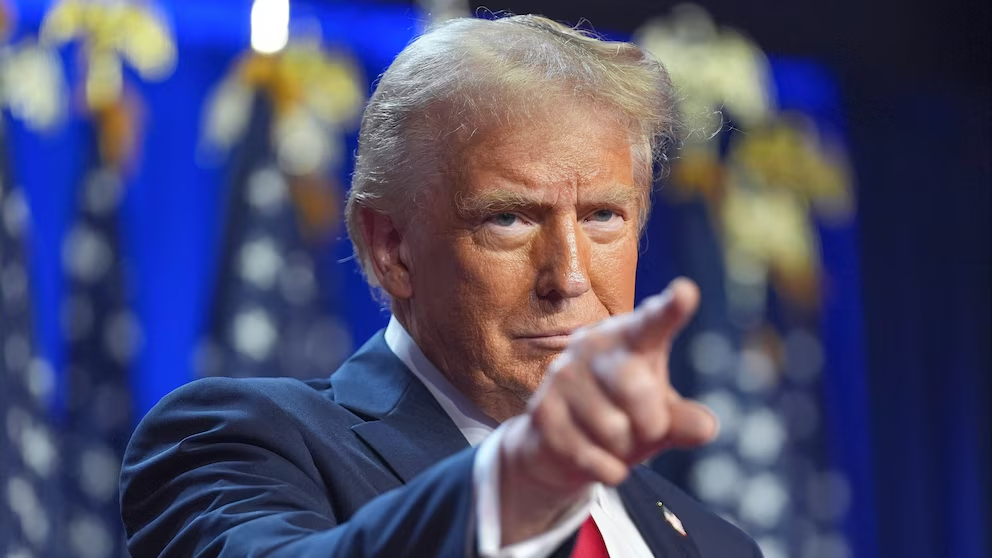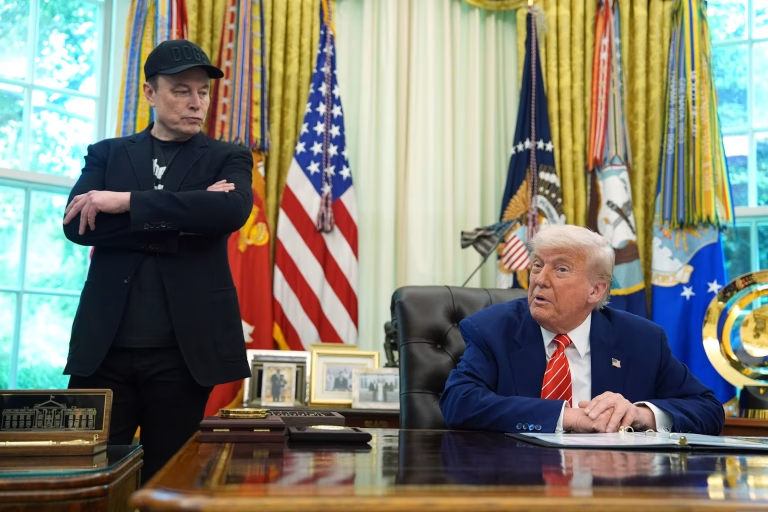
Anti-Semitism is on the rise in the US amid unprecedented social division
Half of Jewish schoolchildren in the US face discrimination, and the number of anti-Semitic incidents have increased tenfold over the past decade. The year 2025 was a turning point: the terrorist attack on the Israeli embassy and the attack in Colorado showed how the Middle East conflict is destabilising America.
Anti-Semitism as a mirror of American division
The US has almost always been considered a country that treated Israel and Jews well, but left-liberal tendencies still made themselves felt. Against the backdrop of the war between Tel Aviv and Hamas, which began in 2023, there was a sharp rise in anti-Semitism in the US, although attacks on Muslims also became more frequent. In November of that year, three Palestinian students were nearly killed in Vermont for speaking Arabic. Against this backdrop, 75% of Americans believed that anti-Semitism had risen sharply, and 59% noted an increase in hatred towards Muslims. Nevertheless, anti-Semitism dominated these processes, and it was Israel that divided American society.
According to Gallup data for 2025, support for Israel among Americans fell below 50% for the first time, while sympathy for the Palestinians rose to 33%. The divide is particularly noticeable among Democrats: only 21% of their electorate retains pro-Israel views, compared to 59% who sympathise with Palestine. For the United States, the partisan divide over Israel has become unprecedented.
Traditionally strong support for Israel among Republicans is now limited to isolationist sentiments — many oppose helping allies without direct benefits for the United States. The younger generation, especially left-wing Democrats, is increasingly critical of Israel, and figures such as Alex Soros are funding pro-Palestinian protests.

Although the authorities have begun deporting radical activists, the trend towards cooling relations is irreversible. Even Trump is forced to strike a balance, given Americans’ fear of a new Middle East war and the need to win the votes of young people and Muslims. The political divide over Israel calls into question the future of the strategic alliance.
All these factors have contributed to the rise of anti-Semitism. The first victim of the culture wars surrounding Israel in November 2023 was a 69-year-old Jewish man in Los Angeles who died after a fight with pro-Palestinian activists. He was struck on the head with a megaphone, but it was understood that he would not be the last victim due to the intensity of the street protests. Two years ago, the Senate hastily called for $1.2 billion to be allocated to Jewish groups in the United States to protect them from anti-Semitism, but against the backdrop of a budget impasse, it was not possible to obtain the full amount.
Meanwhile, as the war in Gaza continued, anti-Semitism continued to grow at an explosive rate. Then, under pressure from the United States, Israel agreed to arrange short ‘humanitarian pauses’ but not to declare a ceasefire. Even former Israeli Prime Minister Ehud Barak acknowledged that the window of opportunity for an effective and ‘safe’ continuation of the war was rapidly closing, because public opinion in the West was strongly in favour of a ceasefire and political pressure was mounting.
A wave of hatred from Queens to Cooper Union
The protracted war could not only isolate Israel, but also undermine US relations with the entire Muslim world — from Turkey to Malaysia. But the main front of the ‘escalation’ was within America. Almost immediately after the conflict began, schoolchildren in Queens staged a riot against a teacher of Jewish origin. They severely damaged their own school under Palestinian flags, demanding the dismissal of a teacher who had attended a pro-Israel rally. The teacher had to go into hiding, and the school administration had to call the police urgently, but the wave of anti-Semitism continued to sweep across the United States.
In New York City, pro-Palestinian protesters chased Jewish students across the Cooper Union college campus, hoping to take revenge for the bombing of Gaza. The police chose not to intervene and only after some time escorted the Jews out through a back door. At other universities, Israeli students were threatened with mass shooting, and the police reacted with the same lack of enthusiasm. Of course, this was influenced by massive police cuts, and in New York alone, 2,500 officers resigned in 2023 alone, but the key factor was the unwillingness to be accused of supporting racism or Zionism.

The number of anti-Semitic incidents in the United States jumped by 300-400% in just the first month and a half of the war in Gaza, and attacks on Jews now account for approximately 60% of all hate crimes. It was in schools and on campuses that the ‘new left’ ideology, full of aggressive BLM slogans, ultra-feminism and anti-Semitism, was cultivated, and the Democrats kept it under control only as long as they remained in power.
Shapiro, Harris, and a divided party
But everything changed after Donald Trump came to power. At that point, it was no longer beneficial for the Democrats to keep left-wing extremists on a leash, and they simply did not have that level of control. Initially, even the Democrats themselves came under attack when an attempt was made to set fire to the governor’s residence in Pennsylvania, and Governor Josh Shapiro and his family miraculously managed to escape the consequences. It was obvious that Shapiro was targeted as a Jew and a representative of the moderate wing of the centrist Democrats, who takes a pro-Israel position, which now contradicts the agenda of most Democrats.
In the last Pew Research poll before the arson attack, the proportion of critics of Israel rose to 53%. Even among Republicans, attitudes toward Israel had deteriorated somewhat, and among Democrats, 70% of voters already viewed Israel negatively. By that time, street activists from Antifa and BLM had long been participating in large-scale pro-Palestinian protests. In 2025, they launched a campaign to set fire to Tesla car dealerships across America in protest against Trump’s policies. Now it is the turn of ‘too’ moderate Democrats like Shapiro, who also do not fit into the new left-wing agenda. It is important to note that Shapiro is considered one of the Democratic Party’s main contenders for the next election in 2028, and his fellow Democrats wanted to make him Kamala Harris’ running mate, but decided against it precisely because of his position on Israel. However, given the current division among Democrats, it was unclear how the next primaries would unfold, and there was a sense of tension in the air.
Trump only fuelled this fire when the White House threatened to fight with all its might against anti-Israel sentiment and anti-Semitism in the United States, which are gaining momentum among the American left. After Trump’s decision to cut funding to universities accused of spreading anti-Semitism and his threats to withdraw support for the UN over the arrest warrant for Netanyahu, left-wing radicals became more active. On 21 May in Washington, a militant from Chicago linked to BLM and the Socialist Liberation Party shot and killed two Israeli embassy employees while shouting ‘Free Palestine.

This incident was the culmination of a wave of anti-Semitic attacks: over the past 10 years, their number in the United States has grown by 900%, reaching 10,000 in 2024. Half of Jewish schoolchildren and two-thirds of students face discrimination, which coincides with growing criticism of Israel’s policies — 70% of Democrats now view them negatively. In response, the Trump administration has tightened measures: cancelling grants to problematic universities and launching ‘Project Esther’ to counter foreign funding of pro-Palestinian protests. This was extremely important because the Middle East agenda continued to destabilise the situation within the United States, and the rise in political violence was a clear indication of this. After all, BLM had not been active for a long time, and although it was ‘profitable’ for the Democrats to activate their agents in any case, the result was the largest anti-Semitic terrorist attack in many years.
But it was far from the only one in a very short period of time. Less than two weeks later, another anti-Semitic terrorist attack in the United States was carried out by a ‘welcome migrant’ who had arrived during Biden’s era of open borders and had been in America illegally since 2022. During a pro-Israel rally in Colorado, he began throwing Molotov cocktails at participants. The terrorist turned out to be an Egyptian migrant, Mohamed Sabri Soliman. He planned the attack on the Jewish holiday of Shavuot, disguising himself as a gardener.
Before his arrest, he managed to shout anti-Israeli slogans and throw several of the 18 Molotov cocktails he had prepared. The investigation revealed his connection to the defunct USAID agency. The number of USAID employees before the agency was closed reached 10,000, and among them there are clearly many potentially dangerous representatives, who are angry at the whole world because of the liquidation of their organisation. It is obvious that now some of the people associated with USAID are organising the first terrorist attacks, and the attack on the Jewish holiday was planned in advance.
The mass influx of illegal immigrants under Biden complicates the situation — many of them have terrorist ties, and the Trump administration is unable to deport them all. The FBI assesses the current level of terrorist threat as the highest since 9/11. In Colorado, local authorities are demonstrating their inability to cope with the crisis: meetings have been moved online due to disruptions by pro-Palestinian activists, and left-wing deputies have made Boulder a sister city to the Palestinian city of Nablus. These events are taking place against a backdrop of rising anti-Semitic sentiment in the United States, complicating the White House’s fight against the terrorist threat.
The current situation gives the White House an opportunity to continue tightening immigration policy, but new anti-Semitic terrorist attacks cannot be ruled out against the backdrop of America’s division. A large number of dangerous migrants have entered the US under Biden, and many of them are Muslims and are extremely anti-Israel. Now we are also seeing the radicalisation of dismissed personnel from USAID and the special services, who will seek revenge on the new administration by trying in every way to destabilise the situation in America to the detriment of Trump, often playing the ‘anti-Zionism’ card. The level of anti-Semitism in the US will continue to grow against the backdrop of unprecedented social division, which the country has not seen in the last 170 years.


Great article, thanks for sharing such valuable insights! 🙌 I really appreciate the way you explained the topic so clearly and made it easy to understand. It’s rare to find content that is both informative and practical like this. Keep up the great work, I’ll definitely be following your future posts!